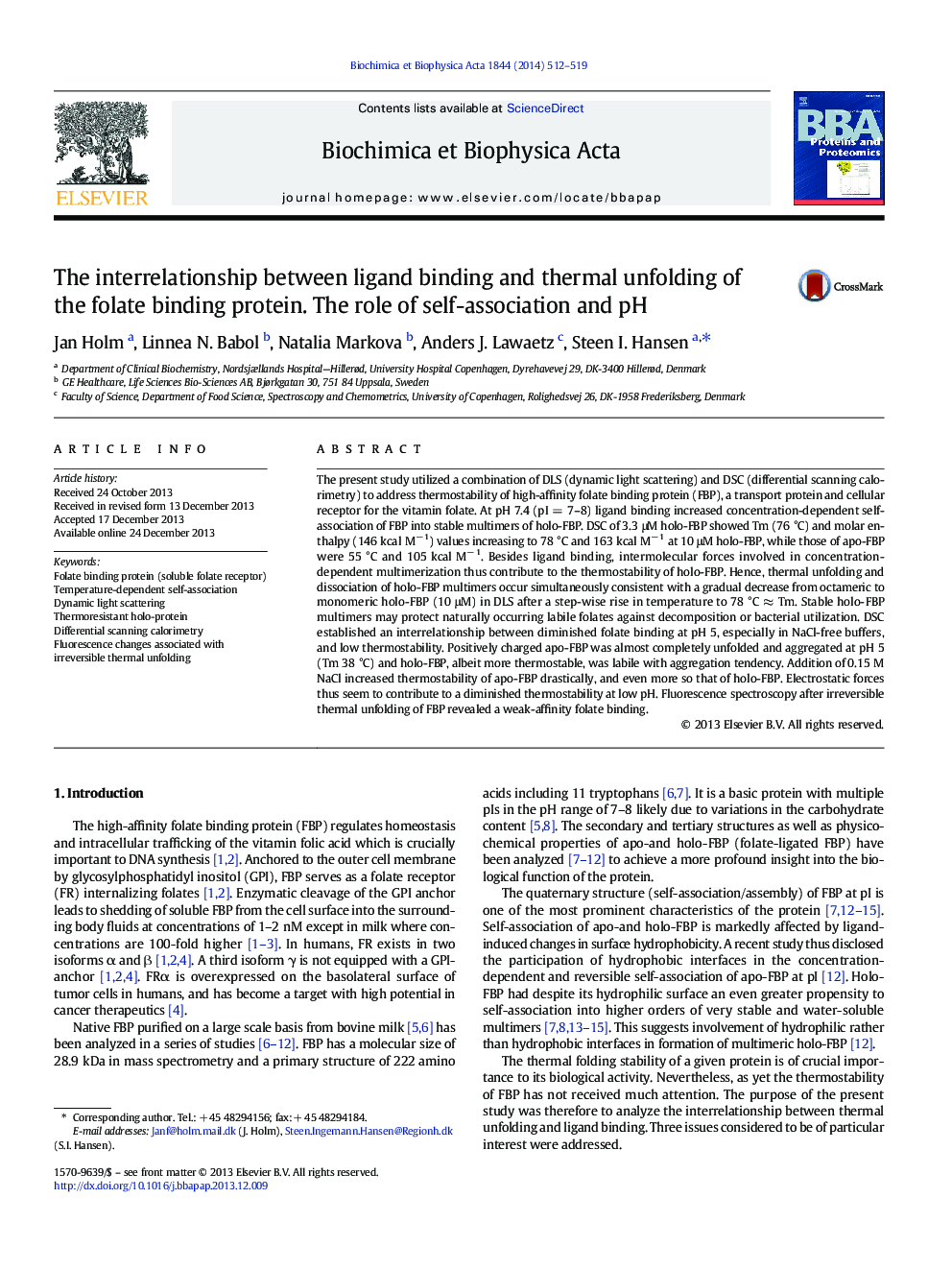| Article ID | Journal | Published Year | Pages | File Type |
|---|---|---|---|---|
| 10536929 | Biochimica et Biophysica Acta (BBA) - Proteins and Proteomics | 2014 | 8 Pages |
Abstract
The present study utilized a combination of DLS (dynamic light scattering) and DSC (differential scanning calorimetry) to address thermostability of high-affinity folate binding protein (FBP), a transport protein and cellular receptor for the vitamin folate. At pH 7.4 (pI = 7-8) ligand binding increased concentration-dependent self-association of FBP into stable multimers of holo-FBP. DSC of 3.3 μM holo-FBP showed Tm (76 °C) and molar enthalpy (146 kcal Mâ 1) values increasing to 78 °C and 163 kcal Mâ 1 at 10 μM holo-FBP, while those of apo-FBP were 55 °C and 105 kcal Mâ 1. Besides ligand binding, intermolecular forces involved in concentration-dependent multimerization thus contribute to the thermostability of holo-FBP. Hence, thermal unfolding and dissociation of holo-FBP multimers occur simultaneously consistent with a gradual decrease from octameric to monomeric holo-FBP (10 μM) in DLS after a step-wise rise in temperature to 78 °C â Tm. Stable holo-FBP multimers may protect naturally occurring labile folates against decomposition or bacterial utilization. DSC established an interrelationship between diminished folate binding at pH 5, especially in NaCl-free buffers, and low thermostability. Positively charged apo-FBP was almost completely unfolded and aggregated at pH 5 (Tm 38 °C) and holo-FBP, albeit more thermostable, was labile with aggregation tendency. Addition of 0.15 M NaCl increased thermostability of apo-FBP drastically, and even more so that of holo-FBP. Electrostatic forces thus seem to contribute to a diminished thermostability at low pH. Fluorescence spectroscopy after irreversible thermal unfolding of FBP revealed a weak-affinity folate binding.
Related Topics
Physical Sciences and Engineering
Chemistry
Analytical Chemistry
Authors
Jan Holm, Linnea N. Babol, Natalia Markova, Anders J. Lawaetz, Steen I. Hansen,
